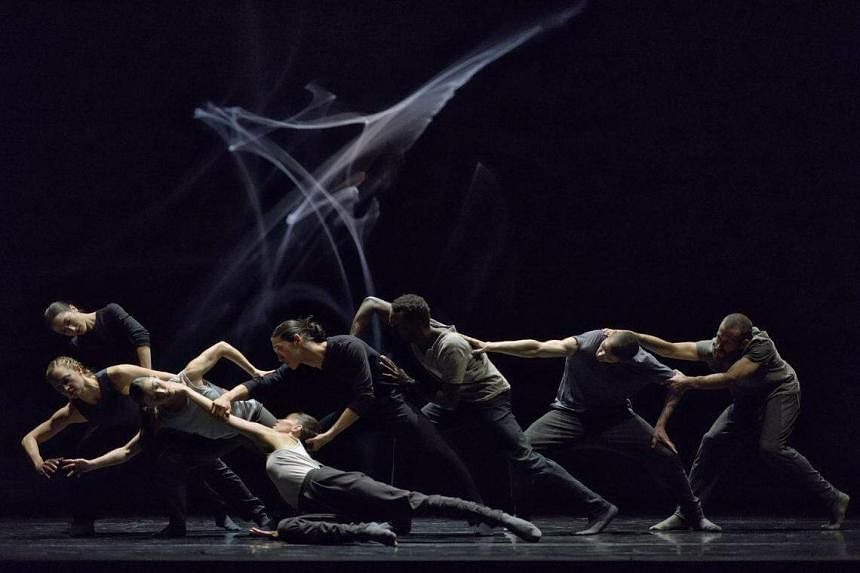Revisor
Kidd Pivot
Esplanade Theatre
Last Friday, 8pm
Revisor, performed by Canadian dance company Kidd Pivot, is the third collaboration between actor and playwright Jonathon Young and choreographer Crystal Pite.
Ostensibly a performance about human greed and corruption, it is really an exegesis of the limits of language. It combines verbal text with exaggerated gestures and elongated movements to reveal how the spoken word can both allude and delude.
Audiences in Singapore will remember an earlier Pite and Young collaboration, The Statement, a punchy and striking work performed here in 2018 by Nederlands Dance Theatre (NDT) at The Esplanade’s da:ns Festival.
The Statement was set in a boardroom, with all the action centred on a single table. The dancers moved in sync with the rhythm of the voiceovers, the staccato motions adding to the emphasis and emotional undertones. This same complex relationship of movement and words is expanded in the 1½-hour Revisor, based on Nikolai Gogol’s 1836 satire The Government Inspector. The play is a comedy of errors satirising the self-deluding power of corruption and greed.
Revizor in Russian means Inspector and in a playful twist that emphasises the relationship to language, the fake inspector in this performance is a Revisor whose authority lies in the shifting of a comma. He is a person who supposedly resides in the realm of the written word.
The stage, however, presents the mysterious inspector’s point of view. Though unseen, her voice is heard reading out stage directions and she details the classic theatrical scene: Figure 1, Figure 2, a table, a cabinet, a lamp, a door. In this opening act, spoken language, whether stuttered, rushed or fluently delivered, appears to take precedence.
The dancers’ bodies seem to emphasise the rhythms of word and breath, but as this reviewer becomes accustomed to this new language of expression that joins one body to another disembodied voice, she sees the fissure. The bodies reveal undercurrents that the words obscure. As the fake inspector is told by Minister Desouza, evidence is to be revealed physically.
Thus begins the slowly unfolding middle act. A dream-like sequence, it is a stripped-down and abstract retelling that draws attention to the subtext of the farce. The dancers are dressed in simple shirts and trousers, the focus is on the bodies that cannot contain the emotions that words tried to constrain. The dancers move with far more fluid motions that contrast the punctuated rhythms in the first act. A strange figure, both human and animal, with giant antlers extending her arms, appears as an emblem of this distorted world.
The final act returns to the corrupt theatrical world of the farce. The performers, once again in their wigs and tailored costumes, are shocked to find out that they have been duped. The concluding image is a tableau of bodies frozen in anxiety, anticipating the arrival of the real inspector.
With this cynical humour, Revisor is not likely to strike an emotional chord. Farce rarely does. But it certainly stimulates the mind and has this reviewer second-guessing her gestures and choice of words.

